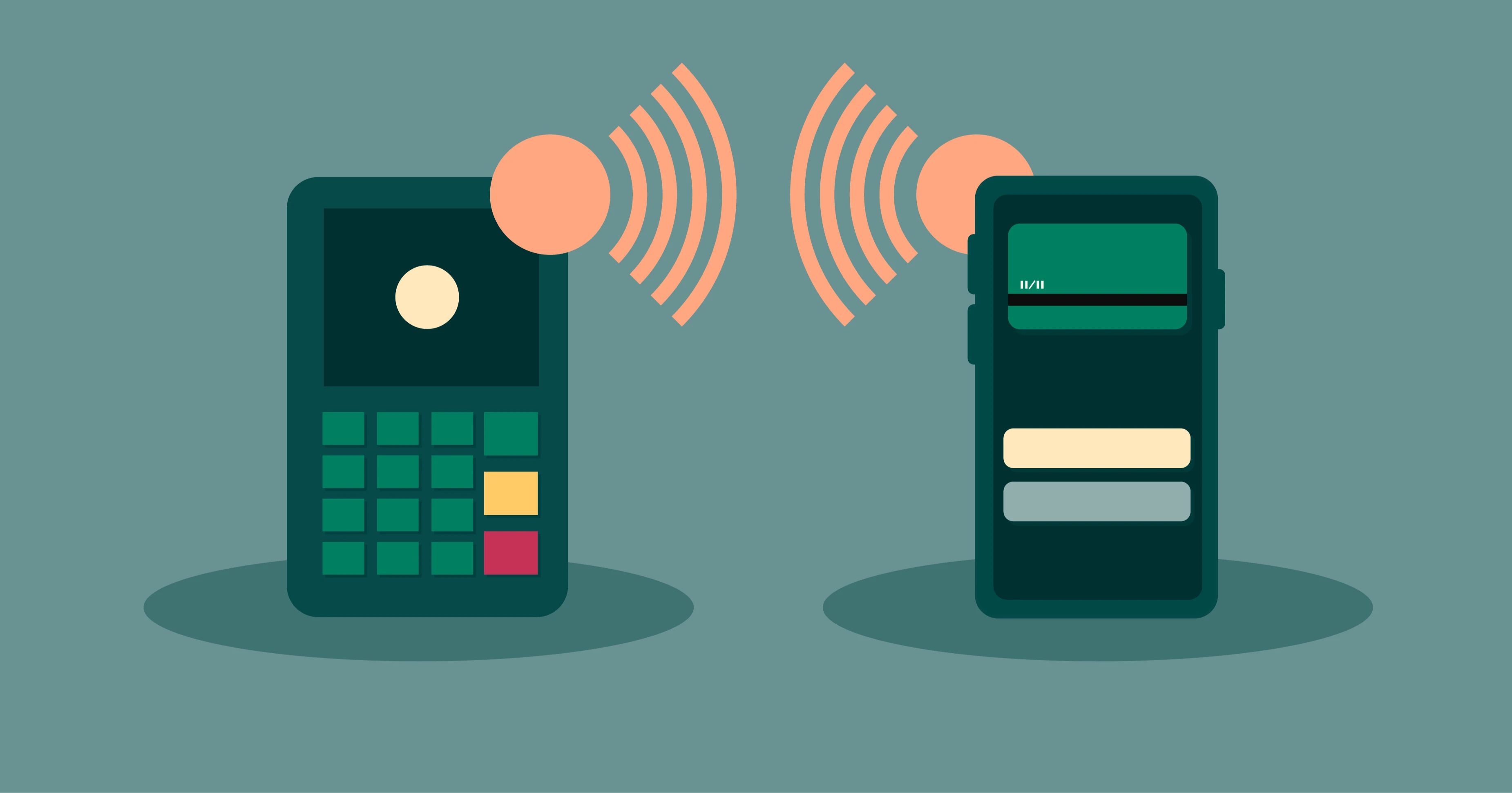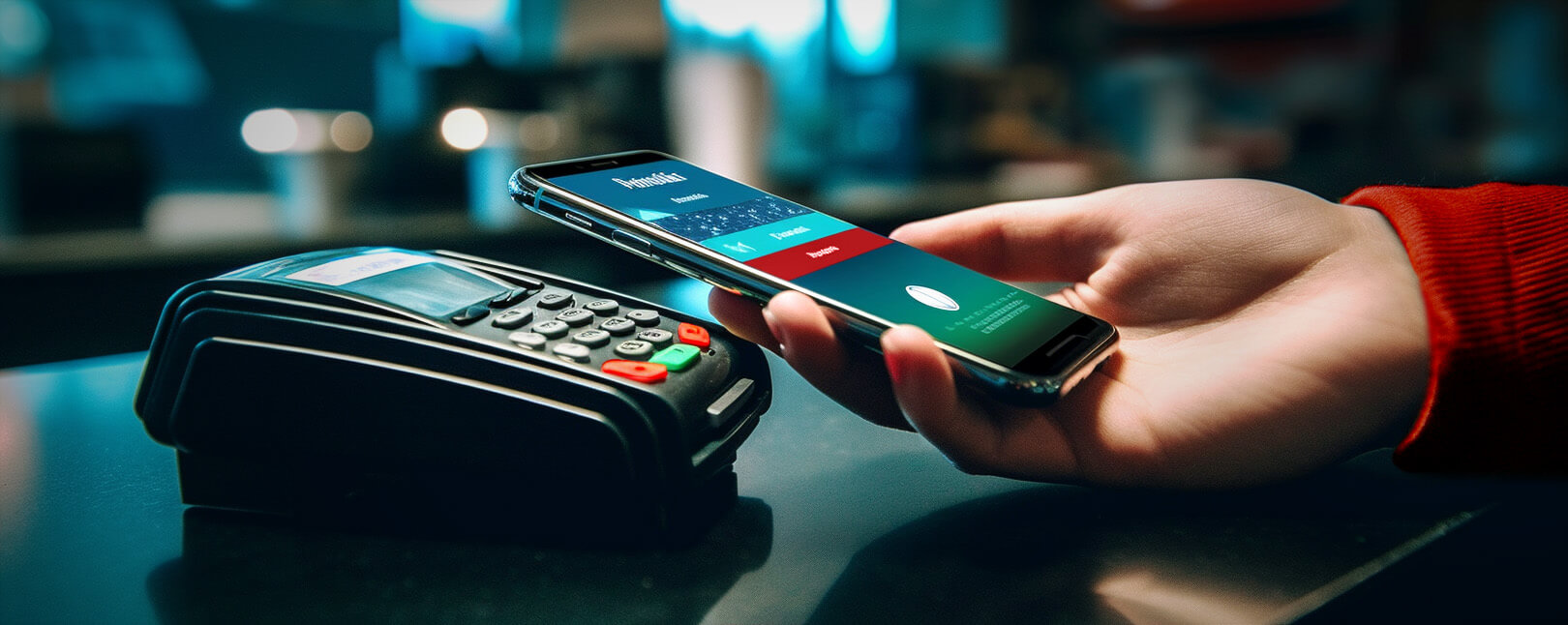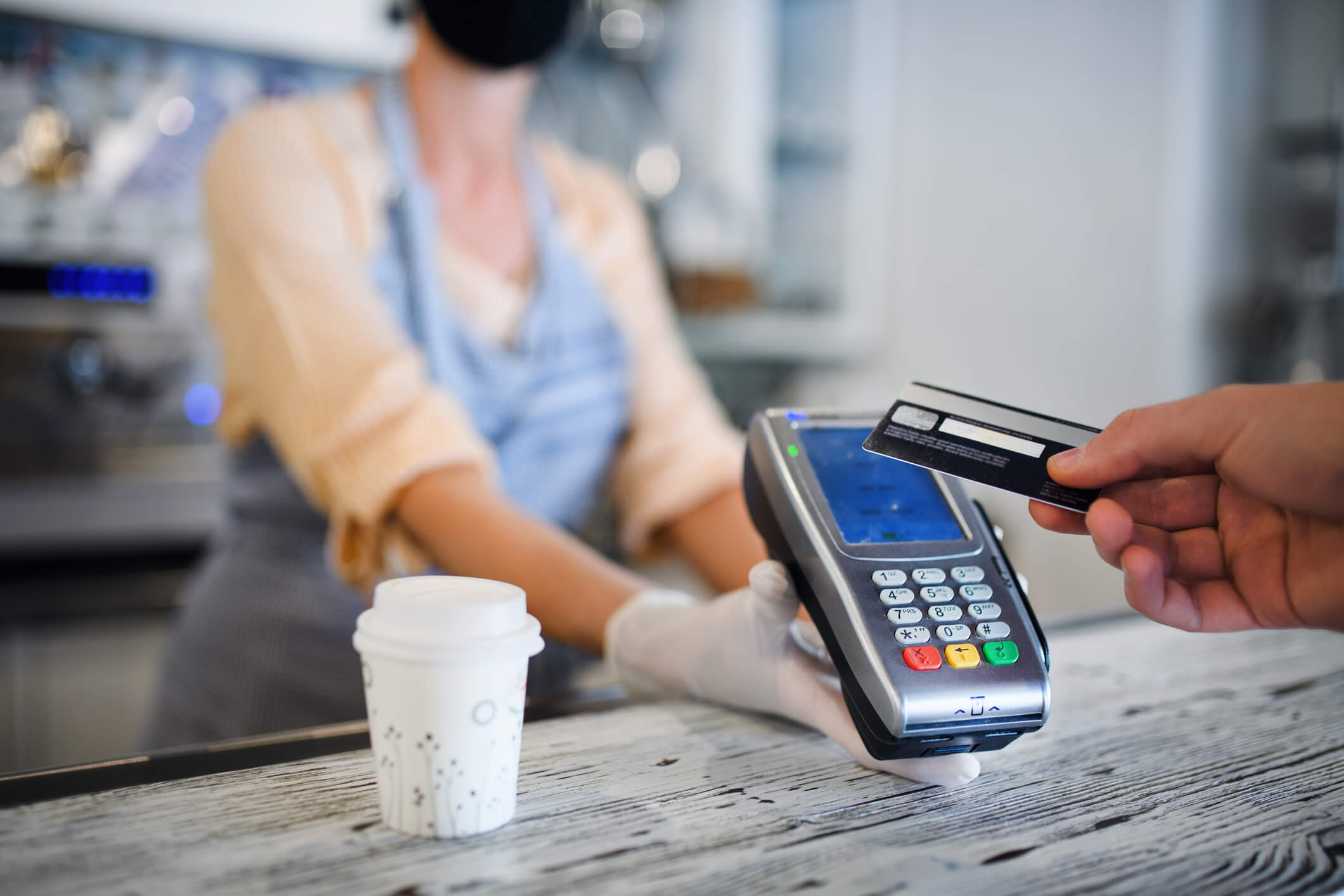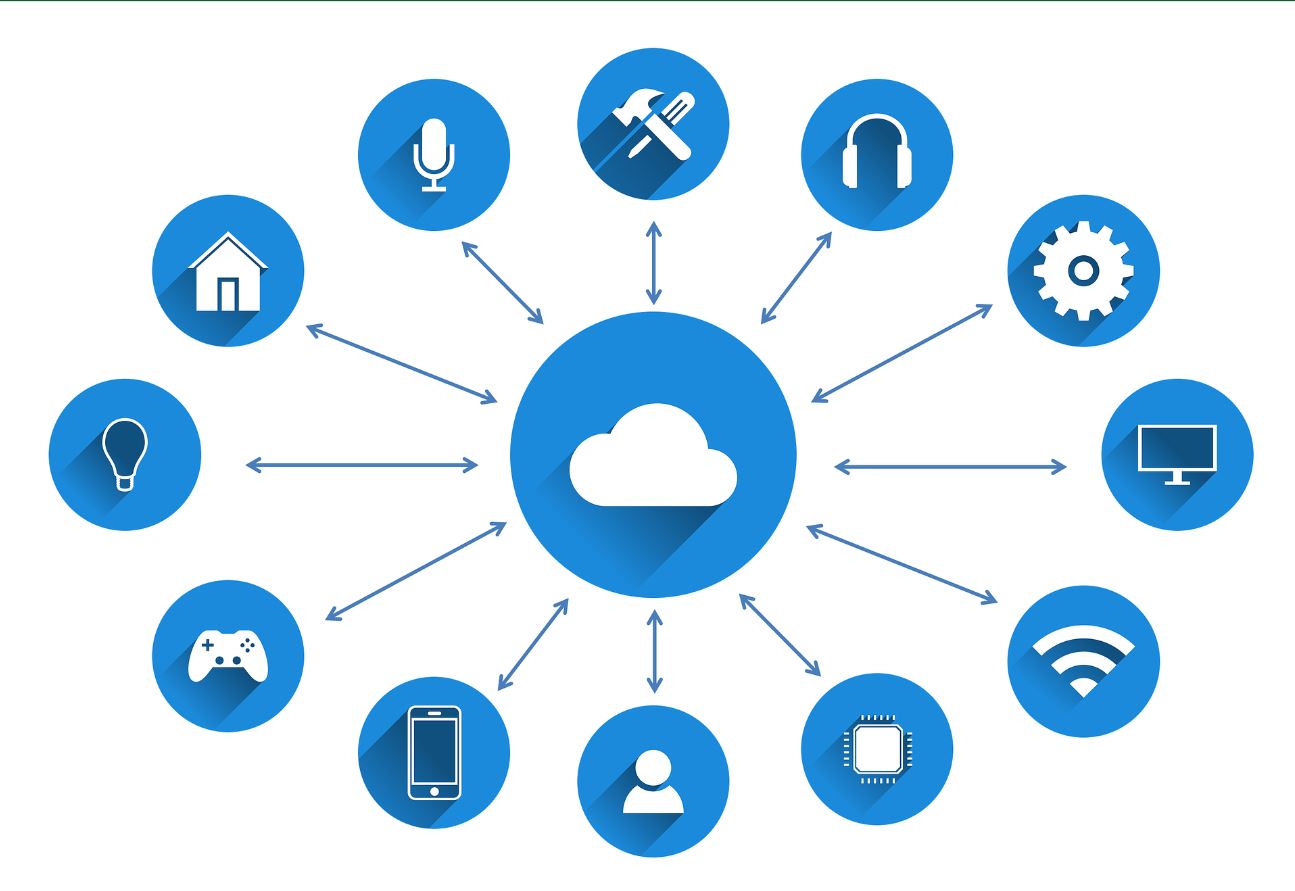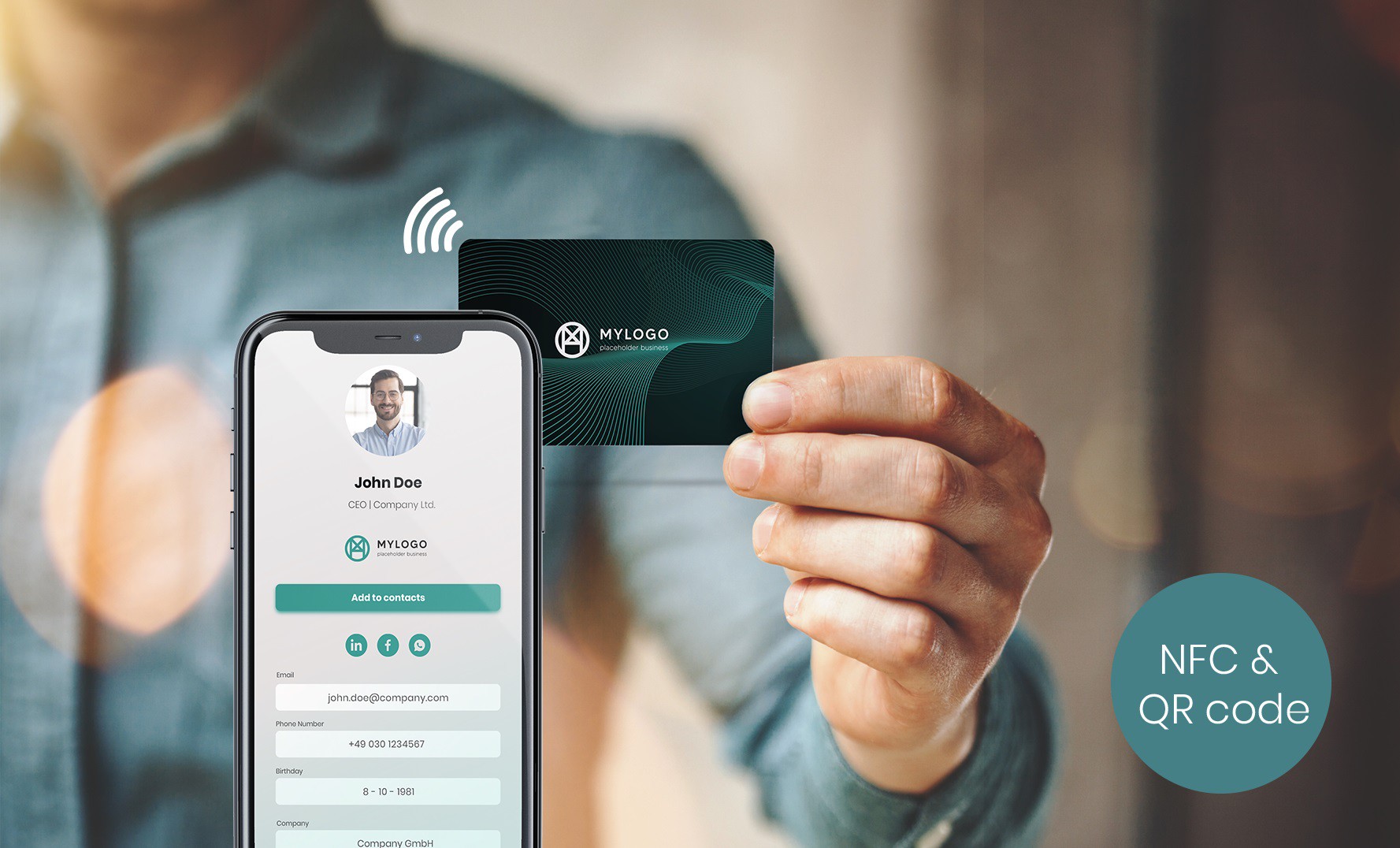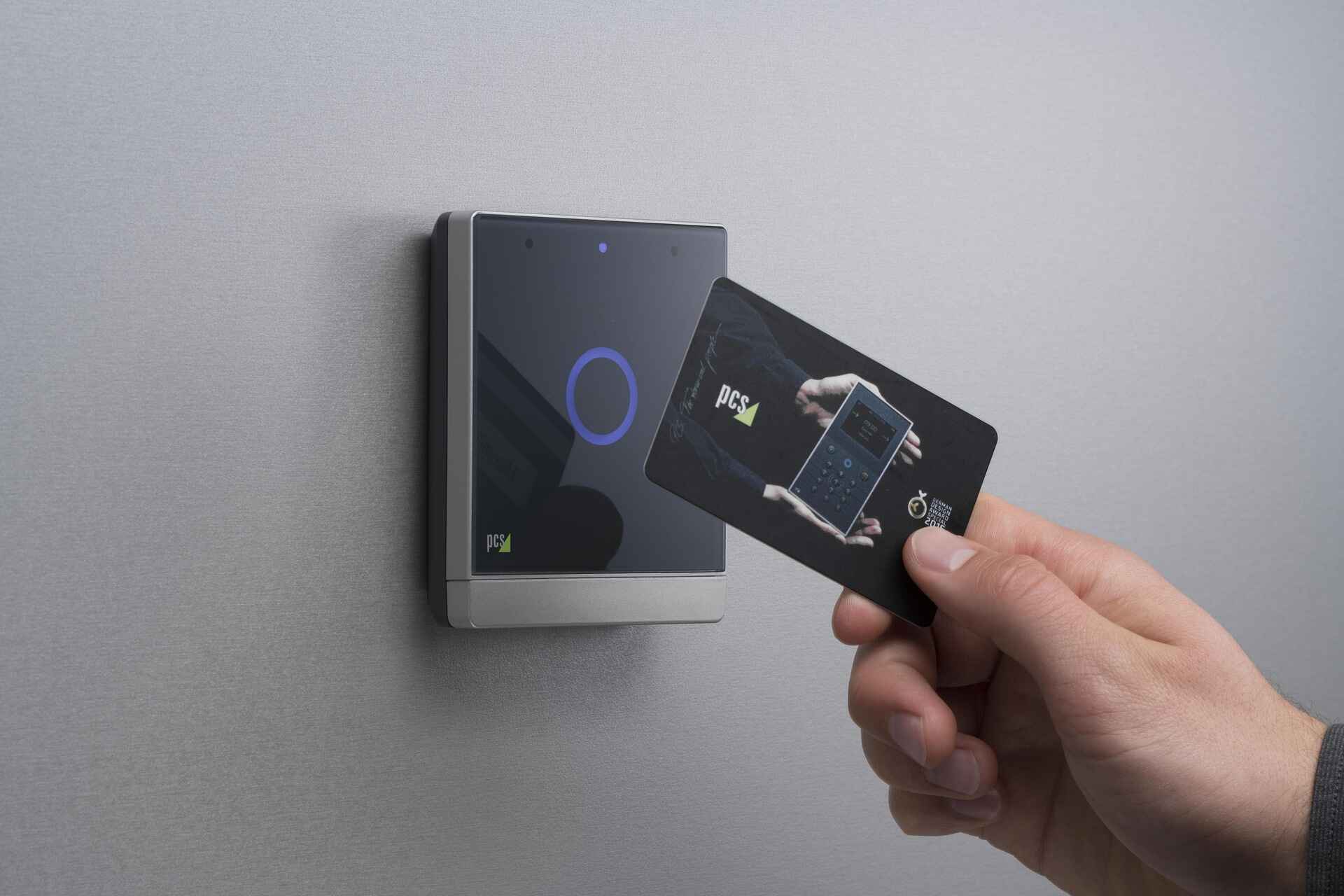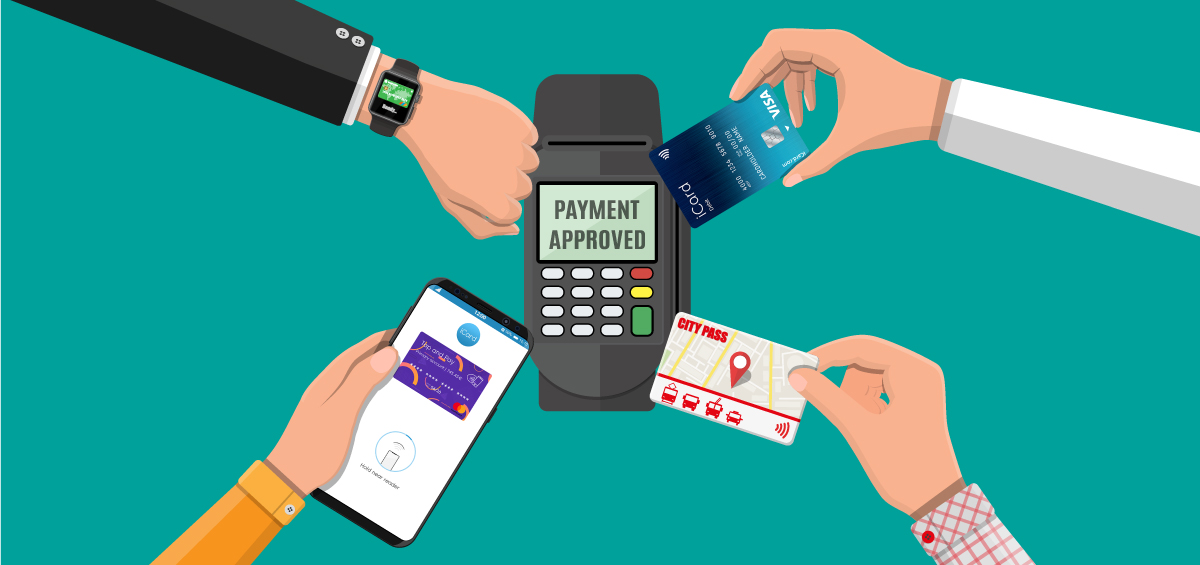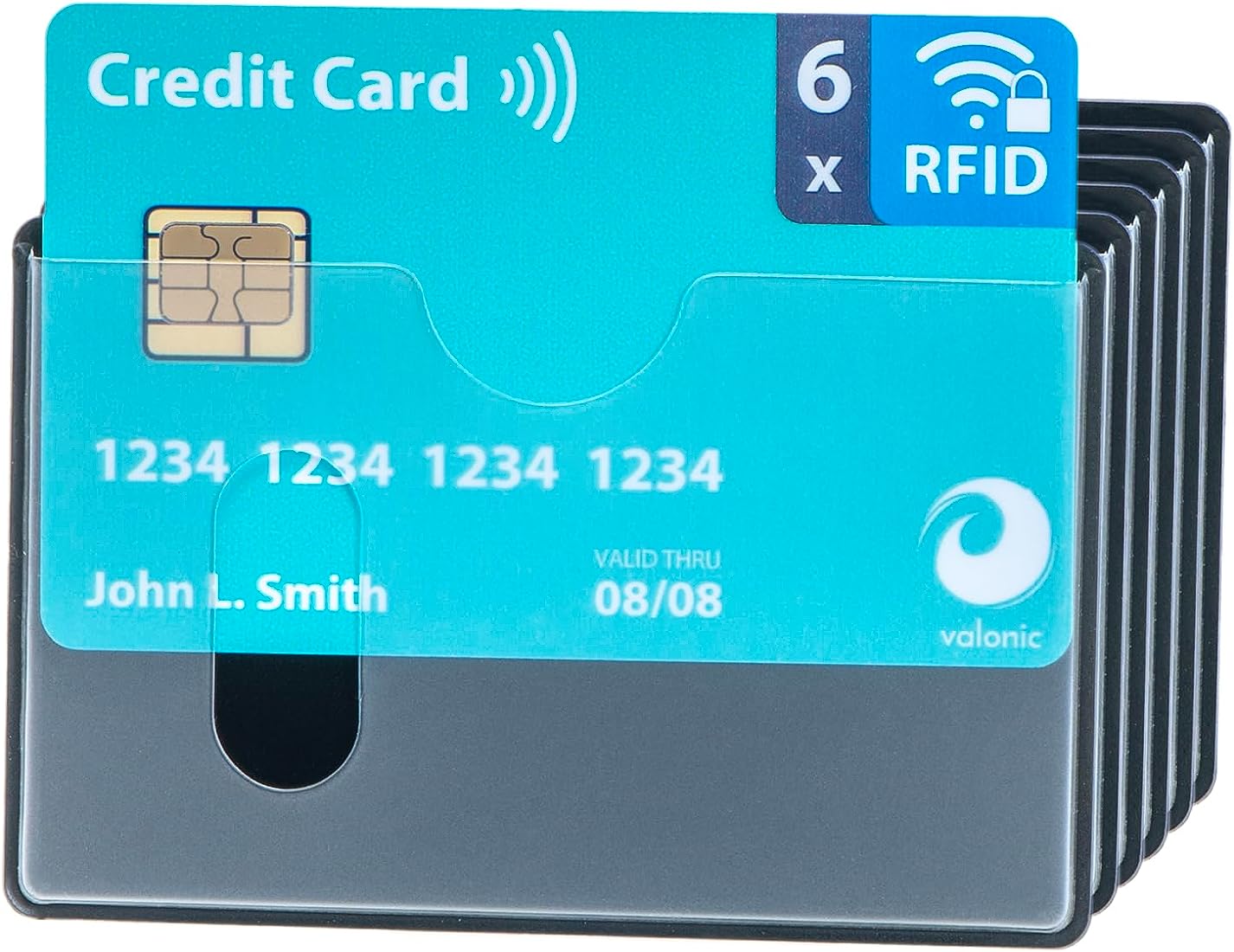Introduction
Welcome to the fascinating world of Near Field Communication (NFC), a technology that has revolutionized the way we interact with our devices and the world around us. NFC has gained immense popularity in recent years, offering a seamless and secure method of communication between compatible devices. In this article, we will explore the extent to which NFC can reach and how it has transformed various industries and applications.
NFC, a short-range wireless communication technology, enables two devices to exchange data simply by bringing them close together. Its convenience and versatility have made it an integral part of our daily lives, powering contactless payments, smart access control systems, and more. Whether you are tapping your smartphone to make a payment or sharing files between two devices, NFC makes it all possible with just a touch.
But how far can NFC reach? Is its range limited to merely a few centimeters like its name suggests? Let’s dive into the intricacies of NFC technology to understand its capabilities and limitations.
NFC operates on the principle of electromagnetic induction, which allows for communication between devices over a short distance. Unlike other wireless technologies like Bluetooth or Wi-Fi, which have a broader range, NFC focuses on close-range interactions, typically within a few centimeters. This close proximity requirement ensures the security of NFC transactions and prevents interference from other devices.
Although the range of NFC is limited compared to other wireless technologies, its short-range capabilities are intentional. NFC is designed for short-distance communication to facilitate secure transactions and data exchanges between devices in a controlled environment. This limitation ensures that NFC remains a reliable and secure method of communication.
However, it is worth noting that the actual range of NFC can vary depending on various factors, including the specific devices involved and the environmental conditions. These factors can influence the transmission power and signal strength, ultimately impacting the effective range of NFC communication.
In the following sections, we will delve deeper into the factors affecting NFC range, explore the limitations of NFC, and examine techniques for extending its range. Additionally, we will explore the wide range of applications where NFC has made a significant impact, from mobile payments and public transportation to inventory management and healthcare.
What is NFC?
Near Field Communication, or NFC, is a short-range wireless communication technology that allows devices to interact with each other when they are in close proximity. It is a subset of Radio Frequency Identification (RFID) technology and operates on the principles of electromagnetic induction. NFC enables devices to exchange data and information by simply bringing them close together, typically within a few centimeters.
NFC is built upon the underlying technology of RFID, but with some key differences. While RFID is primarily used for identification and tracking purposes, NFC adds an extra layer of functionality by allowing two-way communication between devices. This means that NFC-enabled devices can not only read information from passive NFC tags but also actively transmit data to other NFC devices.
One of the key features of NFC is its simplicity and ease of use. Unlike technologies such as Bluetooth or Wi-Fi, NFC does not require complex setup processes or manual pairing. Devices with NFC capabilities can communicate with each other by simply touching or bringing them close together. This makes NFC a convenient and intuitive technology for various applications.
NFC operates on the frequency of 13.56 megahertz (MHz) and supports two modes of operation – read/write mode and card emulation mode. In read/write mode, an NFC-enabled device can read information from and write data to compatible tags or other devices. This enables functionalities like contactless payments, file sharing, and accessing digital content.
In card emulation mode, an NFC-enabled device can simulate an NFC tag, allowing it to be used as a contactless smart card or access card. This mode enables applications such as mobile payments, ticketing systems, and access control, where the NFC device acts as a virtual representation of a physical card or token.
NFC technology has gained widespread adoption and is now integrated into a wide range of devices, including smartphones, tablets, smartwatches, and even certain credit and debit cards. With the increasing number of NFC-enabled devices, the potential applications and uses for NFC continue to expand.
Overall, NFC technology has revolutionized the way we interact with our devices and the world around us. Its simplicity, security, and versatility make it an ideal solution for various industries, including retail, transportation, healthcare, and more. In the following sections, we will explore the range of NFC, factors affecting its functionality, and the various applications where NFC has made a significant impact.
How Does NFC Work?
To understand how NFC works, it’s essential to grasp the underlying principles of electromagnetic induction. NFC operates on the same fundamental concepts as RFID technology, using electromagnetic fields to enable communication between devices.
When two NFC-enabled devices come into close proximity, an electromagnetic field is created between them. This field allows the devices to exchange data and information. NFC devices have built-in NFC chips, comprising an NFC controller and an antenna. The antenna generates the electromagnetic field, while the NFC controller manages the communication process.
NFC can operate in three different modes: peer-to-peer mode, reader/writer mode, and card emulation mode.
In peer-to-peer mode, two NFC devices can exchange data with each other. This mode enables functionalities such as file sharing, contact information exchange, and gaming interactions. The devices take turns to act as both the sender and receiver of data, establishing a bidirectional communication channel.
In reader/writer mode, an NFC-enabled device, such as a smartphone, can read information from compatible NFC tags or other devices. This mode is commonly used for applications like scanning NFC-enabled posters, accessing digital content, and making mobile payments. The NFC device acts as the initiator of communication and extracts data from the passive NFC tags or other devices.
In card emulation mode, an NFC-enabled device can simulate an NFC tag, allowing it to be used as a contactless smart card or access card. This mode is widely used for applications such as mobile payments, ticketing systems, and access control. The NFC device emulates the behavior of an NFC card, allowing it to interact with compatible NFC readers.
NFC technology relies on short-range communication, typically within a distance of a few centimeters. This limited range ensures secure and reliable communication between devices while minimizing the risk of interference from other nearby NFC-enabled devices.
One of the key advantages of NFC is its ability to function even when both devices are not powered or connected to an external power source. This is possible because NFC operates on inductive coupling, meaning it can harness power from the electromagnetic field generated during communication. As a result, NFC devices can conduct passive communication, allowing them to interact with NFC tags or other devices without their own power source.
It is important to mention that NFC communication requires devices to be in close proximity and aligned properly for effective data exchange. Any obstacles or interference in the environment, such as metal objects or interference from other wireless signals, can disrupt or weaken the NFC signal. Therefore, maintaining a clear line of sight and minimizing environmental interference is crucial for successful NFC communication.
In the next sections, we will explore the range of NFC communication, the factors that can affect its functionality and performance, and potential solutions to extend its range. We will also delve into the wide array of applications where NFC has made a significant impact, transforming industries and enhancing user experiences.
The Range of NFC
When we talk about the range of NFC, it refers to the distance at which NFC devices can effectively communicate with each other. NFC has a relatively short-range compared to other wireless technologies, typically limited to a few centimeters. However, it is important to note that the actual range can vary depending on various factors.
The nominal operating distance for NFC communication is typically stated as 4 centimeters or less. This close proximity requirement serves a purpose – it ensures the security and reliability of NFC transactions. It prevents unintended interaction with other nearby devices and reduces the risk of eavesdropping or unauthorized data access.
The short range of NFC has proven to be advantageous for specific use cases. For example, in contactless payment applications, it provides an added layer of security as the user must physically tap or bring their NFC-enabled device close to a compatible reader for the transaction to take place. This physical action helps prevent data interception and unauthorized access to sensitive information.
It’s worth mentioning that the range of NFC communication can be affected by various factors. The quality of the NFC chip and antenna in the devices plays a significant role in determining the effective range. Devices with well-designed NFC components can achieve slightly longer communication distances compared to those with subpar hardware.
Environmental factors can also impact the range of NFC. Metallic objects, such as coins or keys, can interfere with the electromagnetic field generated by NFC devices, reducing the effective range. Similarly, electromagnetic interference from other wireless signals or electronic devices, such as microwaves or Wi-Fi routers, can disrupt NFC communication.
The orientation and alignment of NFC devices also affect the communication range. Ensuring that the NFC antennas of both devices are aligned properly maximizes the chances of successful communication. Angles and obstructions between the devices may weaken the signal and decrease the range.
Despite the limitations of its short range, NFC technology has seen widespread adoption and success in various applications. The proximity required for NFC communication adds an additional layer of security and prevents accidental interactions. It ensures that intentional communication occurs only when the user intends to engage with an NFC-enabled device or tag.
Next, we will explore the factors that can affect NFC functionality and performance, including methods to extend the range of NFC communication. By understanding these factors, we can better appreciate the range limitations of NFC and find ways to optimize its performance in real-world scenarios.
Factors Affecting NFC Range
The effective range of NFC communication can be influenced by various factors. Understanding these factors is crucial in optimizing the performance and ensuring reliable communication between NFC-enabled devices. Let’s explore some of the key factors that affect the range of NFC.
1. Device Hardware: The quality and design of the NFC chip and antenna in the devices play a significant role in determining the range. Devices with higher-quality components generally have better signal strength, resulting in a slightly longer communication distance. Conversely, devices with subpar hardware may experience shorter range limitations.
2. Environmental Factors: The surrounding environment can impact NFC range. Metallic objects, such as coins or keys, can interfere with the electromagnetic field generated by NFC devices, reducing the effective range. Similarly, electromagnetic interference from other wireless signals or electronic devices, such as microwaves or Wi-Fi routers, can disrupt NFC communication. Keeping the devices away from such sources of interference helps maintain optimal range performance.
3. Alignment and Orientation: Proper alignment and orientation of NFC devices are essential for successful communication. Aligning the NFC antennas of both devices ensures a better connection and maximizes the chances of successful data exchange. Deviating from the ideal alignment or having obstructions between the devices may weaken the NFC signal and decrease the range.
4. Transmission Power: The transmission power of NFC devices can affect the range. NFC devices typically operate at low power levels to ensure secure and reliable communication. However, certain applications may allow for adjusted transmission power levels, potentially impacting the range. Adjusting the transmission power should be done judiciously, considering security, interference, and the intended distance of communication.
5. Antenna Design: The design and placement of the NFC antenna in devices can impact the range. Devices with well-designed antennas that are strategically positioned have better signal propagation, resulting in improved range. Manufacturers invest in antenna optimization to achieve the best possible range performance for their NFC-enabled devices.
6. Operating Frequency: NFC operates at a frequency of 13.56 megahertz (MHz). This frequency is regulated globally for NFC usage to ensure compatibility and interoperability. Operating at this standard frequency allows NFC devices to communicate effectively with each other. Deviations from the standard frequency can impact range and compatibility.
It’s important to note that while these factors can influence the range of NFC communication, they are not absolute determinants. The actual range achievable may vary depending on the specific devices, environmental conditions, and other situational factors. The nominal range of NFC, typically stated as a few centimeters, serves as a guideline but can be extended under optimal conditions.
In the next section, we will explore techniques and technologies used to extend the range of NFC communication. These methods can help bridge the gap between devices and overcome the physical limitations of NFC range, opening up more possibilities for its applications.
NFC Range Limitations
While NFC technology offers many advantages, it does have certain limitations, particularly when it comes to range. The short-range nature of NFC communication can pose challenges and constraints in certain situations. Let’s explore some of the key limitations of NFC range.
1. Short Distance Communication: The most apparent limitation of NFC is its relatively short range, typically within a few centimeters. This close proximity requirement ensures secure and intentional communication between devices. However, it may not be suitable for scenarios where longer distances are required, such as transferring data between devices located further apart.
2. Limited Interoperability: NFC range limitations can also affect interoperability between devices. For NFC devices to communicate, they must be in close proximity and properly aligned. This can be cumbersome when attempting to establish communication between multiple devices or when accessing NFC tags installed in hard-to-reach locations.
3. Environmental Factors: The range of NFC can be impacted by the surrounding environment. Obstacles such as metallic objects or electromagnetic interference can weaken the NFC signal and reduce the effective range. This limitation needs to be considered when planning NFC deployments in environments with potential sources of interference.
4. Signal Attenuation: NFC signals can experience attenuation, leading to a decrease in signal strength and effective range. Factors such as the quality of the NFC chip and antenna, as well as the transmission power, can affect signal attenuation. This limitation needs to be taken into account when deploying NFC-enabled devices in real-world scenarios.
5. Orientation and Alignment: The alignment and proper orientation of NFC devices are critical to ensuring successful communication. Deviating from the ideal alignment or having obstructions between devices can weaken the NFC signal, limiting the range further. This limitation necessitates careful placement and positioning of NFC devices for optimal range performance.
While these limitations exist, it’s important to remember that NFC technology is purposely designed for short-range communication. The proximity requirement adds an extra layer of security and prevents unintended communication or data interception. In many applications, the limitations are advantageous in ensuring controlled and secure interactions between devices.
Next, we will explore techniques and technologies that can extend the range of NFC communication. These methods offer potential solutions to overcome the physical limitations and expand the applications of NFC technology.
Extending NFC Range
Although NFC technology is primarily designed for short-range communication, there are techniques and technologies available to extend its range. These methods help overcome the physical limitations of NFC and open up new possibilities for its applications. Let’s explore some of the ways in which NFC range can be extended.
1. NFC Boosters and Repeaters: NFC boosters and repeaters are devices that amplify the NFC signal, allowing for extended range. These devices can be strategically placed to create an extended NFC coverage area. They capture the NFC signal from the original device and amplify it to reach more distant NFC-enabled devices or tags. This technology is particularly useful in scenarios where a larger coverage area is required, such as in stores or public transportation systems.
2. Antenna Design and Placement: Optimizing the design and placement of NFC antennas in devices can help improve the range. Manufacturers invest in antenna optimization to achieve the best possible range performance for their NFC-enabled devices. By fine-tuning the antenna design and ensuring its strategic placement within the device, the NFC signal can be maximized for better range and reliability.
3. Increase Transmission Power: Adjusting the transmission power of NFC devices can potentially extend the range. Most NFC devices operate at low power levels to ensure secure and reliable communication within close proximity. However, certain applications may allow for adjusted power levels, which may result in a slightly extended range. It is important to carefully consider security, potential interference, and the specific requirements of the application when increasing the transmission power.
4. Use of NFC Relay Devices: NFC relay devices act as intermediaries between two NFC devices that are out of range from each other. These devices capture the NFC signal from one device and transmit it to the other, effectively extending the range. NFC relay devices are particularly useful in applications where multiple NFC-enabled devices are involved or when accessing NFC tags that are not within the immediate proximity.
5. Combination with Other Wireless Technologies: NFC can be combined with other wireless technologies, such as Bluetooth or Wi-Fi, to achieve extended range and functionality. By leveraging the strengths of each technology, it is possible to establish communication between NFC-enabled devices that are not within the close proximity range. For example, NFC can be used for initial pairing or authentication, and then a switch to Bluetooth can enable data transfer over a longer distance.
It is important to note that while these methods can extend NFC range, they may introduce additional considerations such as security, compatibility, and complexity. The range extension techniques should be implemented with a comprehensive understanding of the specific requirements and limitations of the application.
By extending the range of NFC, new possibilities emerge for its applications in various industries. From enabling seamless interactions in large retail spaces to enhancing access control systems in office buildings, the extended range of NFC offers convenience and efficiency in a wider range of scenarios.
NFC Applications
Near Field Communication (NFC) technology has found widespread adoption in numerous industries and applications, transforming the way we interact with devices and enabling new levels of convenience and functionality. Let’s explore some of the key applications where NFC has made a significant impact.
1. Contactless Payments: One of the most common and widely adopted applications of NFC is in contactless payment systems. With NFC-enabled devices like smartphones and smartwatches, users can make secure and convenient payments by simply tapping their device on a compatible payment terminal. NFC technology ensures quick and seamless transactions, making it a popular choice for mobile payment platforms like Apple Pay, Google Pay, and Samsung Pay.
2. Access Control and Security: NFC is increasingly being used for secure access control systems. With NFC-enabled access cards or mobile devices, users can unlock doors, gates, or secure areas by simply tapping their device on a reader. The secure authentication and communication provided by NFC make it an ideal choice for access control, reducing the need for physical keys or swipe cards.
3. Public Transportation: NFC technology has revolutionized public transportation systems by offering convenient ticketing solutions. Travelers can use their NFC-enabled devices or contactless cards to pay for fares or refill their transit cards. NFC-based ticketing systems provide efficiency and flexibility, allowing passengers to quickly tap and go, reducing waiting times and eliminating the need for physical tickets or cash.
4. Smart Home and IoT Integration: NFC has become a crucial component in the realm of smart home technology and the Internet of Things (IoT). NFC-enabled devices can be used to manage and control various smart home devices, such as lighting, security systems, and home appliances. Users can simply tap their device on NFC tags or devices to trigger specific actions or customize their home automation settings.
5. Digital Content Sharing: NFC allows for easy and seamless sharing of digital content between devices. By tapping an NFC-enabled device against another compatible device or NFC tag, users can instantly transfer files, photos, contacts, and other data. This functionality makes NFC a fantastic tool for content sharing, enhancing collaboration and communication in personal and professional settings.
6. Healthcare Applications: NFC has found valuable applications in the healthcare industry. It can be used for patient identification, allowing healthcare professionals to access patient records quickly and securely. NFC can also be utilized for medicine management, enabling patients to access dosage information, set reminders, or monitor their health with connected wearable devices.
7. Loyalty Programs and Marketing: NFC technology has transformed loyalty programs and marketing efforts. With NFC-enabled devices, customers can easily participate in loyalty programs by tapping their device on an NFC tag or reader. NFC also allows businesses to engage customers with personalized marketing campaigns, offering targeted promotions, discounts, and interactive experiences through NFC-enabled advertisements.
These are just a few examples of the wide range of applications where NFC technology has proven to be invaluable. With its convenience, security, and versatility, NFC continues to find new and innovative uses across industries, enhancing user experiences and driving digital transformation.
Conclusion
Near Field Communication (NFC) technology has undoubtedly revolutionized the way we interact with devices and the world around us. With its ability to facilitate secure and convenient communication between compatible devices, NFC has found widespread adoption in various industries and applications.
In this article, we explored the range of NFC and its inherent limitations. While NFC operates on a short-range principle, typically limited to a few centimeters, this close proximity requirement ensures secure transactions and reliable communication. Factors such as device hardware, environmental conditions, and alignment can affect NFC range, requiring careful consideration in real-world deployments.
Despite its limitations, NFC technology offers numerous benefits and applications. From contactless payments and access control systems to public transportation ticketing and smart home integration, NFC provides convenience, efficiency, and enhanced user experiences. It has also found applications in healthcare, marketing, and digital content sharing.
Through techniques such as boosters, repeaters, antenna design optimization, and the combination with other wireless technologies, it is possible to extend the range of NFC, making it more versatile and expanding its potential applications.
As NFC technology continues to evolve, we can expect to see further advancements and innovations. From improved communication range to enhanced security measures, the future of NFC holds promise for even greater possibilities.
Whether it’s making secure contactless payments with a tap of a smartphone, accessing digital content effortlessly, or seamlessly interacting with smart devices in our homes, NFC has become an integral part of our daily lives. As technology advances and NFC becomes more ingrained in our devices and infrastructure, its convenience and versatility will only continue to grow.







